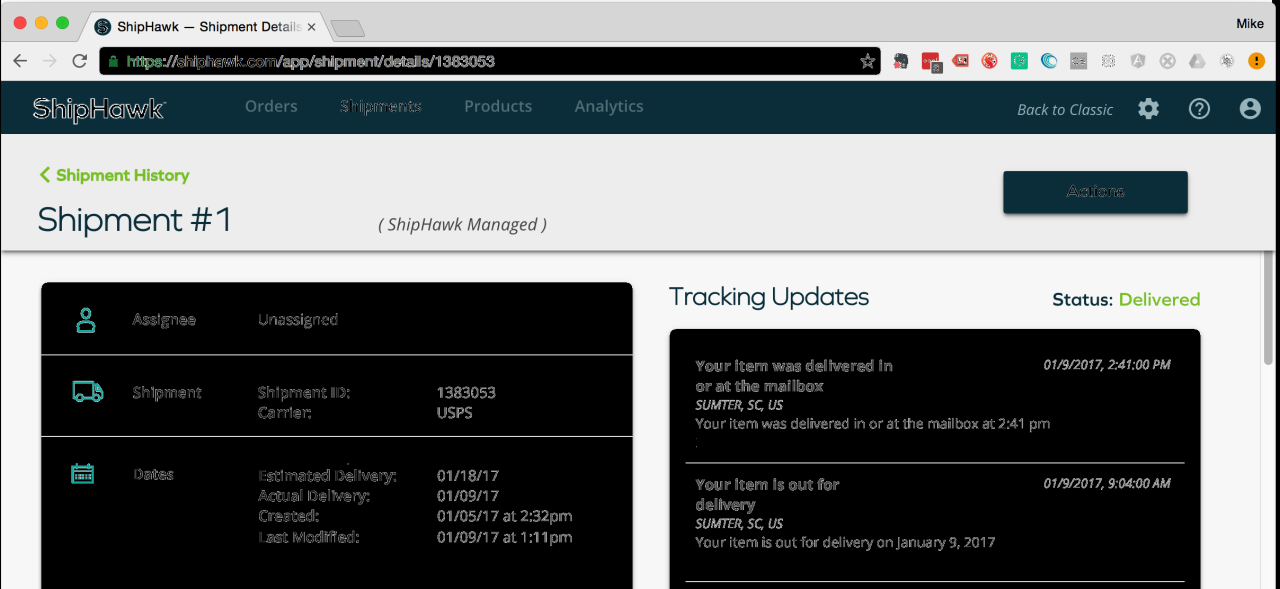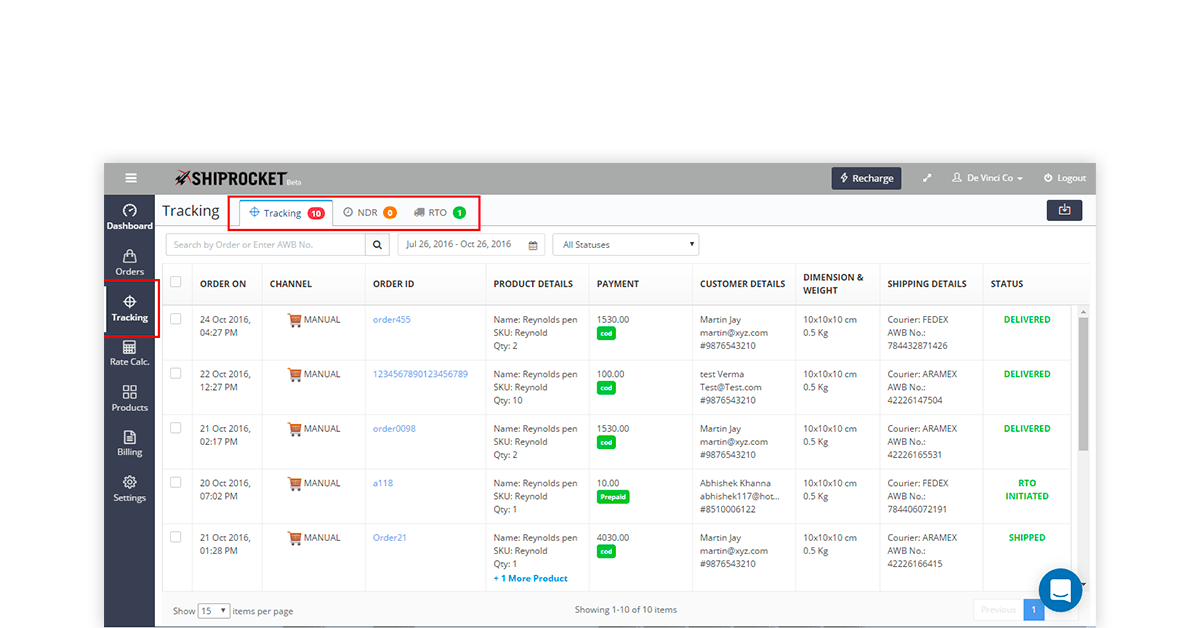In today’s interconnected world, the movement of goods is the lifeblood of global commerce. From raw materials traversing continents to a single e-commerce package arriving at a customer’s doorstep, the journey is often complex, fraught with potential delays, and demands meticulous oversight. The days of simply hoping a shipment arrives are long gone. In their place, a critical technological advancement has emerged: Shipment Tracking Software (STS). This article will delve into the multifaceted world of STS, exploring its definition, key features, profound benefits, the challenges of its implementation, and its promising future, demonstrating why it has become an indispensable tool for businesses operating in the modern supply chain.
The Evolving Landscape of Logistics and the Need for Visibility
The logistics industry has undergone a dramatic transformation. What was once a largely manual, paper-driven process has evolved into a hyper-efficient, technology-dependent ecosystem. This evolution is driven by several factors:
- Globalization: Supply chains now span multiple countries, time zones, and regulatory environments.
- E-commerce Boom: The expectation of fast, reliable, and transparent delivery has become the norm for consumers.
- Just-In-Time (JIT) Inventory: Businesses rely on precise timing to minimize warehousing costs and maximize efficiency.
- Increased Competition: Companies must constantly innovate to gain a competitive edge, and superior logistics is a key differentiator.
Without adequate visibility, these complexities can quickly spiral into chaos. Lost shipments, unexpected delays, damaged goods, and inefficient resource allocation are common pitfalls that can lead to significant financial losses, damage to reputation, and frustrated customers. This is where shipment tracking software steps in, offering a beacon of clarity in an otherwise opaque journey.
What Exactly is Shipment Tracking Software?
At its core, Shipment Tracking Software is a centralized digital platform designed to monitor and manage the movement of goods from their origin to their final destination. It aggregates data from various sources – carriers, logistics providers, internal systems, and IoT devices – to provide real-time updates on a shipment’s location, status, and estimated time of arrival (ETA).
More than just a simple GPS locator, STS acts as a comprehensive control tower, offering a panoramic view of the entire logistics network. It transforms raw data into actionable insights, enabling businesses to proactively manage their supply chain, respond to disruptions swiftly, and communicate effectively with all stakeholders.
Key Features and Capabilities
A robust shipment tracking software offers a suite of features designed to maximize visibility and control:
- Real-time Location Tracking: This is the foundational feature, leveraging technologies like GPS, cellular triangulation, IoT sensors, and telematics devices integrated into vehicles or cargo. It provides live maps and continuous updates on a shipment’s precise location, movement, and speed.
- Automated Notifications and Alerts: STS can be configured to send automated alerts via email, SMS, or in-app notifications for various events: departure, arrival at a waypoint, unexpected delays, customs clearance issues, or even temperature deviations for sensitive cargo. This proactive communication minimizes surprises and allows for immediate intervention.
- Estimated Time of Arrival (ETA) Prediction and Optimization: Utilizing historical data, real-time traffic conditions, weather forecasts, and machine learning algorithms, STS can provide highly accurate ETAs. It can also suggest alternative routes or adjustments to minimize delays, optimizing delivery schedules.
- Historical Data & Analytics: The software collects and stores extensive historical data on past shipments, routes, carrier performance, and delivery times. This data is invaluable for performance analysis, identifying bottlenecks, optimizing future routes, negotiating better carrier rates, and continuous improvement.
- Integration Capabilities: To be truly effective, STS must seamlessly integrate with other critical business systems. This includes Transportation Management Systems (TMS), Warehouse Management Systems (WMS), Enterprise Resource Planning (ERP) systems, e-commerce platforms, and direct APIs from various carriers. This ensures a unified data flow and eliminates data silos.
- User-Friendly Interface and Dashboards: Modern STS solutions offer intuitive, customizable dashboards that provide a holistic view of all shipments. Users can filter, search, and visualize data easily, tailoring the display to their specific roles and needs.
- Proof of Delivery (POD): Upon delivery, the software often facilitates digital proof of delivery through e-signatures, photo capture, or barcode scanning, ensuring accountability and streamlining billing processes.
- Geofencing: This feature allows users to set up virtual boundaries around specific locations (e.g., warehouses, customer sites). The system then automatically triggers actions or alerts when a shipment enters or exits these predefined zones.
- Reporting and Compliance: STS can generate comprehensive reports on various metrics, aiding in performance reviews and ensuring compliance with industry regulations, customs requirements, and safety standards.
The Multifaceted Benefits of Implementing Shipment Tracking Software
The adoption of STS delivers a cascade of benefits that permeate every layer of a business:
- Enhanced Customer Satisfaction: In an age where consumers expect instant gratification, providing real-time tracking empowers them with transparency. Knowing exactly where their order is and when it will arrive significantly reduces anxiety and the need for customer service inquiries. Proactive communication about delays (before the customer even notices) builds trust and fosters loyalty.
- Improved Operational Efficiency: STS automates many manual tasks associated with tracking, such as phone calls to carriers or manual data entry. This frees up staff to focus on more strategic activities. It also allows logistics managers to identify and address potential issues before they escalate, leading to smoother operations and better resource allocation.
- Cost Reduction: The direct and indirect cost savings are substantial. STS helps minimize losses due to theft or damage by providing constant oversight. It reduces demurrage and detention fees by optimizing arrival and departure times. Furthermore, optimized routes and reduced delays translate into lower fuel consumption and labor costs. Fewer customer service calls also mean reduced operational overhead.
- Risk Mitigation: By providing granular visibility, STS helps identify and mitigate various risks. It can detect unauthorized stops, unusual route deviations, or tampering, enhancing security. In case of an incident (e.g., accident, breakdown), immediate location data facilitates rapid response and recovery efforts. It also aids in compliance with regulations by maintaining a clear audit trail.
- Better Decision-Making: The wealth of data collected by STS provides invaluable insights into supply chain performance. Businesses can analyze carrier efficiency, identify peak seasons, forecast demand more accurately, and make data-driven decisions to optimize their entire logistics strategy.
- Increased Supply Chain Resilience: In a world prone to disruptions (natural disasters, geopolitical events, pandemics), visibility is paramount. STS allows businesses to quickly assess the impact of disruptions, identify alternative routes or carriers, and adapt their plans to maintain continuity, making their supply chain more agile and resilient.
Who Benefits from Shipment Tracking Software?
While the benefits are widespread, several key stakeholders directly gain from STS:
- Logistics Managers and Supply Chain Professionals: Gain ultimate control and visibility over their entire network.
- Shippers and Manufacturers: Ensure their products reach customers efficiently and on time, protecting brand reputation.
- Carriers and Fleet Owners: Optimize fleet utilization, improve driver safety, and enhance service delivery.
- Retailers and E-commerce Businesses: Meet customer expectations for transparent delivery and reduce "where is my order" (WISMO) calls.
- Customers: Experience peace of mind and satisfaction through proactive updates and reliable delivery.
Challenges and Considerations for Implementation
Despite its numerous advantages, implementing shipment tracking software is not without its challenges:
- Data Integration Complexity: Integrating STS with existing legacy systems (TMS, WMS, ERP) can be complex, requiring significant IT resources and careful planning to ensure seamless data flow and avoid compatibility issues.
- Cost of Implementation and Maintenance: The initial investment in software licenses, hardware (if needed), integration, and training can be substantial. Ongoing maintenance, support, and subscription fees must also be factored in.
- Data Security and Privacy: Handling sensitive shipment data requires robust security measures to protect against breaches. Compliance with data privacy regulations (e.g., GDPR) is also crucial.
- User Adoption and Training: Employees accustomed to older, manual processes may resist new technology. Comprehensive training and clear communication about the benefits are essential for successful adoption.
- Scalability: Businesses need to choose a solution that can scale with their growth, accommodating increasing shipment volumes and expanding geographical reach without performance degradation.
- Choosing the Right Solution: The market offers a wide array of STS providers, each with different features, pricing models, and specialization. Selecting the right solution that aligns with specific business needs and budget requires thorough research and evaluation.
The Future of Shipment Tracking Software
The evolution of shipment tracking software is far from over. Several emerging technologies are poised to further enhance its capabilities:
- Artificial Intelligence (AI) and Machine Learning (ML): AI and ML will drive even more sophisticated predictive analytics, anticipating delays before they occur, optimizing routes dynamically in real-time, and even automating decision-making for routine exceptions.
- Blockchain Technology: Blockchain offers the potential for unprecedented transparency, security, and immutability of tracking data. It can create a tamper-proof ledger of every step a shipment takes, enhancing trust among all supply chain partners.
- Internet of Things (IoT) and 5G: The proliferation of tiny, affordable IoT sensors attached to individual packages or pallets, combined with the low latency and high bandwidth of 5G networks, will enable even more granular, real-time data collection, including temperature, humidity, shock, and light exposure.
- Hyper-personalization: Future STS will offer highly personalized tracking experiences for end-customers, with customizable notification preferences, preferred delivery options, and even real-time video feeds for high-value cargo.
- Sustainability Tracking: As environmental concerns grow, STS will increasingly incorporate features to track and report on the carbon footprint of shipments, identify greener routes, and support sustainable logistics practices.
Conclusion
Shipment Tracking Software has transcended its role as a mere convenience to become an indispensable cornerstone of modern logistics. It empowers businesses with unprecedented visibility, control, and efficiency across their complex supply chains. By transforming fragmented data into actionable intelligence, STS not only mitigates risks and reduces costs but also significantly elevates customer satisfaction and fosters greater resilience in the face of an ever-changing global landscape. As technology continues to advance, the capabilities of STS will only grow, further solidifying its position as a critical competitive differentiator and a fundamental enabler of future-proof logistics operations. For any business serious about optimizing its supply chain and meeting the demands of today’s market, investing in a robust shipment tracking solution is no longer an option, but a strategic imperative.

